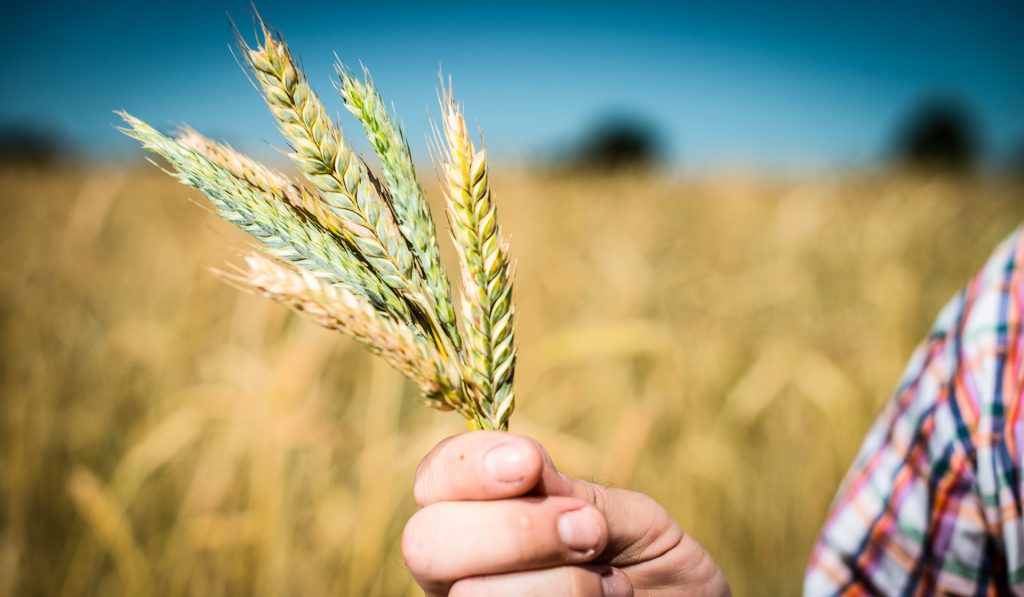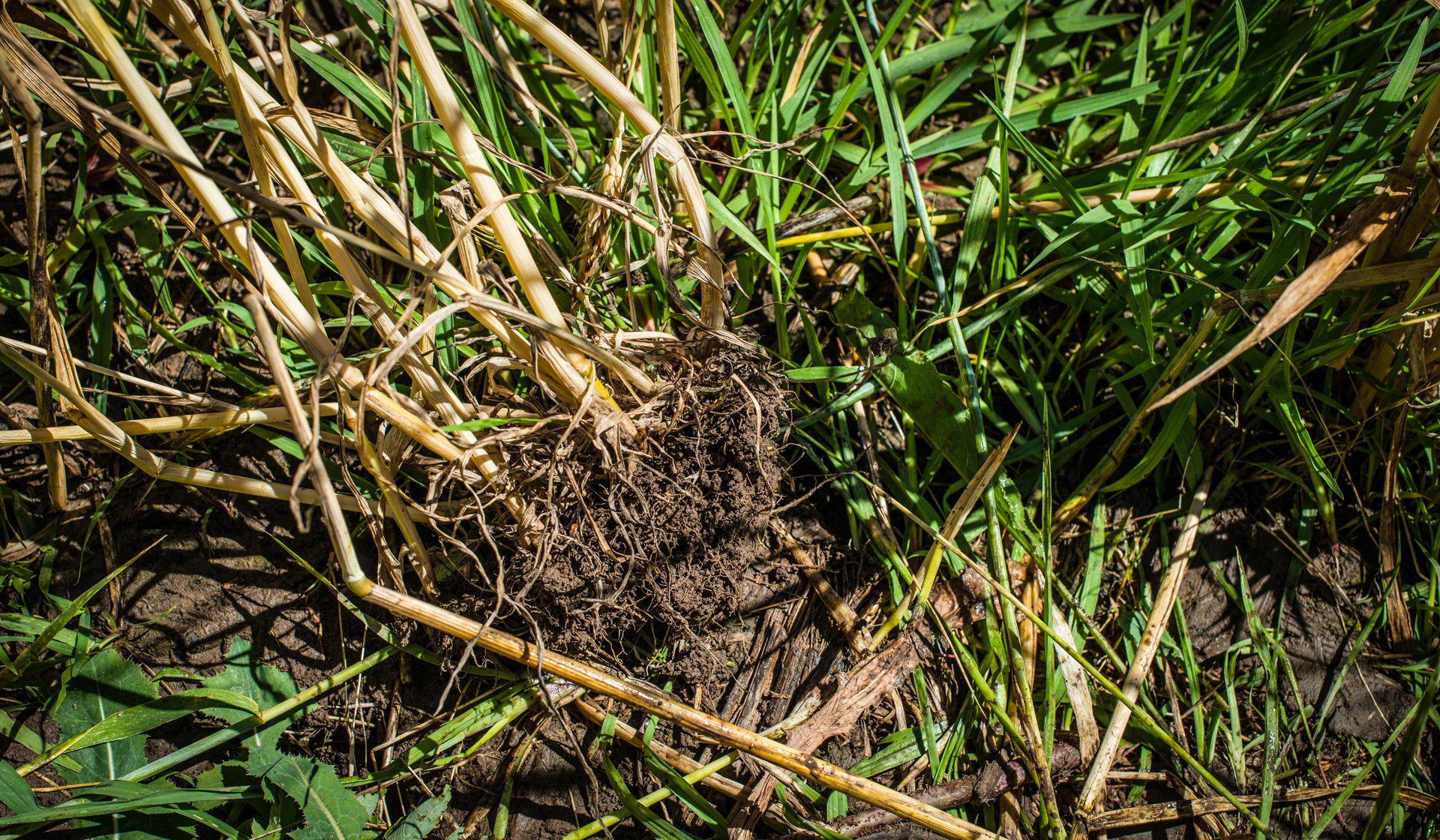Making Cover Crops Pay Off
You already know using cover crops improves soil health. But what does the practice mean to your bottom line?
By Jason Jenkins

With each growing season, the drumbeat intensifies. From Alabama to Alberta and Ontario to Oregon, more and more producers are jumping on the cover-crop bandwagon — with a return on investment that may surprise you.
According to the last U.S. Census of Agriculture, 15.4 million acres were seeded to cover crops nationwide in 2017, and that number continues to grow. The list of benefits attributed to these species — planted not for grain or oilseed harvest — is long and getting longer as more research is conducted. What are some advantages of cover crops? Cover crops can:
- slow soil erosion
- improve soil structure
- lessen soil compaction
- enhance water infiltration and water-holding capacity
- increase soil microbial abundance and activity
- boost organic matter and
- improve nutrient cycling.
But do all these benefits translate into profits? How can cover crops help cut production costs or grow more bushels of corn or soybeans? How long until the return on investment pencils out?
Every Cover Crop Plan Is Different
“Farming isn’t a one-size-fits-all situation, and neither are cover crops,” says Lisa Kubik, Eastern Iowa Field Manager for the Soil Health Partnership, which promotes the adoption of soil health practices for both economic and environmental benefit. “Every single farming operation is different with different crops, different soils and different management. How cover crops can benefit your operation depends on all those differences.”
In 2019, the Sustainable Agriculture Research and Education (SARE) Program released a report detailing the economics of cover crops based on data gathered during national surveys from 2012-2016. The data revealed that when evaluating average fields in average weather conditions, it can take three or more years for cover crops to pay off through the gradual accrual of soil benefits that can improve yields and reduce inputs.
However, the report also detailed specific situations in which the profitability of cover crops can be accelerated to the point that positive returns can be realized in the very first year.
How To Speed Up The Return On Cover Crop Investment
Perhaps the easiest of these management situations to pencil out is when incentive payments are received for planting cover crops.
Federal cost-share programs in the United States, such as the Environmental Quality Incentives Program (EQIP) and Conservation Stewardship Program (CSP) administered by the USDA Natural Resources Conservation Service (NRCS), provide payments in support of cover crops. The Canadian Agricultural Partnership program has provided some limited incentive funding for cover crops in Ontario, and some provincial agencies and even local soil and water conservation districts now also offer financial assistance to make the transition to cover crops more affordable.
Depending on where a grower lives and what programs are available, cost-share can completely pay for the cost of the cover crops and deliver a net return per acre in the first year, $18.64 for corn and $26.45 for soybeans, according to the SARE report.
Depending on where a grower lives and what programs are available, cost-share can completely pay for the cost of the cover crops and deliver a net return per acre in the first year.Click To Tweet“We’ve been part of CSP, and that contract helped us bridge the gap right off the bat,” says Carter Morgan of Perrysville, Indiana, who farms 2,600 acres of corn, soybean and winter wheat in partnership with his father, Brian, his uncle, Darrell, and his brother, Brent. “It may take a little bit of paperwork, but if you figure up the time you spend and the amount of money you get, it’s a pretty good return.”
Grazing cover crops also can provide positive first-year returns, especially when infrastructure such as electric fencing and a water supply are already available. The SARE report estimated a first-year net return of $17.87 per acre for corn and $25.68 per acre for soybeans when cover crops are grazed.
“For someone who has cattle, there is definitely a huge benefit to grazing or haying cover crops,” Kubik says, noting that her family allowed their 100-head cattle herd to graze cover crops both this past fall and again this past spring during calving season. “Fencing can be a challenge, but that might be a situation where you bale up the cover crop.”
Brian Martin of Centralia, Missouri, experienced this exact scenario a few years ago when harvesting a 7-foot-tall cereal rye cover crop that followed corn silage.
“We could hardly see where we were going with the mower,” says Martin, who farms 1,500 acres in central Missouri with his father, Nathan. “We wet-wrapped it and ended up with 6.5 tons to the acre to feed our cow/calf herd.”
Such a thick, lush cover crop also can offer a quantifiable return on investment by providing weed control, especially useful when managing herbicide-resistant weeds. Essentially, the cover crop creates a “biomass blanket” that reduces weed seed emergence and growth. In many cases, a producer can reduce costs by forgoing at least one herbicide application. Additional savings may be realized by avoiding dockage fees for weed seed in harvested grain. A positive net return can be expected, says the SARE report, in the first year for soybeans and the second year for corn. By the third year, per acre returns are estimated at $28.42 in corn and $27.42 in soybeans.
“We’ve pushed termination back, allowing the cover crop to grow,” says Morgan, adding that his family has planted cover crops since 2011. “That’s pushed back our herbicide program later into the year and gives us much better weed control. We’ve actually been able to minimize our herbicide use. If we don’t have to spray a second time, that’s when we really start to save.”
Martin, who is a farmer-member of the Soil Health Partnership, says he sees similar benefit in Missouri, even when a stand is terminated relatively early. “In late April, we had a stand of cereal rye that was only about 18 inches tall when we terminated, but it probably suppressed 80% of the winter annuals,” he adds.
The SARE report details other situations in which cover crops could be profitable before the third year:
- Addressing soil compaction breaks even for corn and nets a profit for soybeans, both in the second year.
- Easing the transition to no-till cropping systems breaks even for soybeans in the first year and nets a profit for corn in the second year.
- Sequestering nutrients, preventing them from being lost from the root zone, breaks even for corn in the second year and nets a profit for soybeans in the third year.
“Any cover crop field we had in 2019 was more profitable than ones without cover crops,” Morgan says. “Most of it was $15 to $20 more per acre, but we had some corn planted into cereal rye that was $90 per acre more profitable than corn without a cover crop.”
Observing the Intangible Benefits of Cover Crops
Cover crop benefits go beyond dollars and cents. Intangibles such as soil moisture and field time can be priceless to producers.
Whether planting or harvesting, the windows of ideal field conditions never seem large enough. Operating in wet soils can create yield-robbing compaction, but the temptation to get in the field when the forecast is calling for more rain can be overwhelming.
Over time, cover crops can help break up compaction, but they also increase water infiltration and soil organic matter, helping to build soil aggregates that provide more structure and strength. The result is a field capable of holding more water while also resisting future compaction.
“On our sandier soils, water retention is huge. With the cover crops, we get infiltration,” says Morgan, noting that about 90 percent of their acreage gets planted to cover crops. “It’s not running off over the top. It’s actually getting in the soil, and it’s still there when we need it.”
The ability for moisture to move down into the soil profile more quickly means that planters and combines can roll sooner after a rain. Morgan says the soil structure and stability provided by covers crops allow him to traffic a field without causing ruts. In Iowa, Kubik says she has seen producers who have cover crops return to fieldwork days before their neighbors.
“It’s been a real challenge getting cash crops in the ground the past two or three springs,” she says. “Two extra days in the field could essentially determine whether a field gets planted or whether a grower has to take prevented plant. That increased time is a huge advantage.”
Getting Started With Cover Crops
While adding cover crops can seem daunting, Kubik says the first step is to define your agronomic goals. Understanding the specific reason for the additional management will ease decision-making for each field.
“Why add the cover crop? Is it for weed control? Erosion control? Nutrient management? Grazing?” she asks. “We have to have a goal in mind to understand what species we use, what our seeding rates will be, what our termination might look like.”
Once goals are identified, Kubik recommends a grower talk to someone experienced with cover crops. It may be an Extension agent, an agronomist, an NRCS specialist or even a fellow farmer. “Devise your plan well in advance and figure out a strategy that works for your operation,” she adds.
The next pieces of advice seem universal: Start small and start simple. Select a field close to home that can be easily observed. Plant a single variety before attempting mixes. And most of all, plan to be flexible and patient.
“Cereal rye is a great way to get started,” Kubik says. “It’s winter hardy, easy to terminate and offers a chance to gain experience that a farmer can build on.”
If there is a disadvantage, both Morgan and Martin say that cover crops do require some extra management — something that Morgan doesn’t mind.
“Cover crops may require more management, but we’re getting a bigger return.”Click To Tweet“I do not understand why farmers don’t want to add management to their operations,” Morgan says. “When you go to the grocery store, who’s making more money? The manager or the person at the checkout counter? Yes, there’s more responsibility, but the manager is the boss, the one taking home a better return. Cover crops may require more management, but we’re getting a bigger return.
“It’s hard to get people to believe you about some of this stuff, but I tell people all the time: Believe what you see, not what you think you know,” he continues. “Once you get in the field and physically see the differences with your eyes, change can happen between the ears.”
Helpful Links
- Soil Health Partnership: https://www.soilhealthpartnership.org/
- Cover Crop Decision Tool – Midwest Cover Crops Council: http://mccc.msu.edu/covercroptool/covercroptool.php
- Cover Crop Recipes – Midwest Cover Crops Council: http://mccc.msu.edu/getting-started/cover-crop-recipes/
- Canadian Cover Crop Decision Tool – Innovations in Cover Crops: http://decision-tool.incovercrops.ca/
- Cover Crops Canada: http://covercrops.ca/
- SARE Cover Crop Economics: https://www.sare.org/Learning-Center/Bulletins/Cover-Crop-Economics






